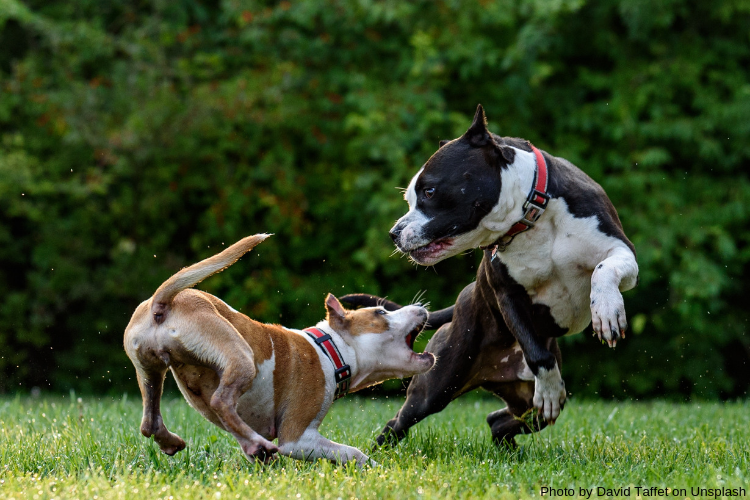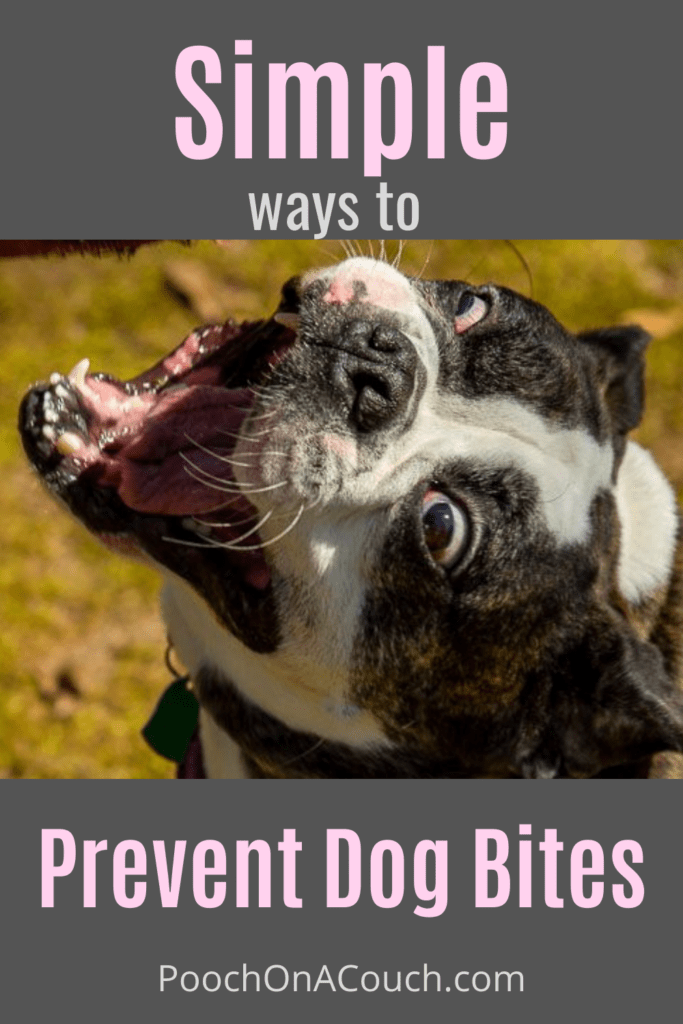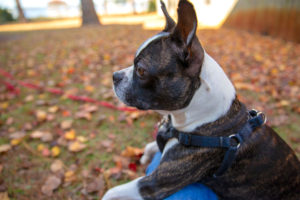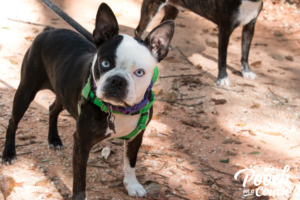You CAN Prevent Dog Bites
It is Dog Bite Prevention Week!
If you subscribe to multiple dog newsletters and blogs, you have already read a wealth of information on ways we, as responsible caregivers of dogs, can prevent dog bites from happening. Much of the information provided focuses on teaching children how to respect dogs, avoid interacting with stranger dogs, and for adults to supervise their children when dogs are around.
All good advice.
Fact: According to multiple (and outdated) sources, there are about 4.5 million dog bites each year. 1 out of every 5 individuals who’ve been bitten by a dog requires medical attention. Children are the most common victim of dog bites and more apt to be severely injured. [1] Dog bites are on the rise – I saw one figure that suggested there was a 140% increase in dog bites over a 15-year period. That’s a lot of bites!
Municipal ordinances governing dog bites vary greatly, but suffice it to say, the definition of “dangerous dog” sometimes is more inclusive than I’m comfortable reading. For example, in some areas of the country, my personal pet Otis, with his history, could be labeled a dangerous dog. It’s frightening to think that a couple of minor bites could land my dog on a dangerous dog list, severely limiting where he can live or travel or play.
Read a few municipal ordinances on dog bites and you’ll agree that we all should do every thing we can to prevent dog bites.
I believe all dog bites are serious bites and do what I can to prevent dog bites in my home.
What is a dog bite? Check out the Dog Bite Scale developed by Dr. Ian Dunbar. It may surprise you. It doesn’t take too bad of a bite to work your way up the scale.
Ways To Prevent Dog Bites – Take Care of Your dog!
- If dogs are exhibiting new and unusual behaviors, schedule a visit with the veterinarian for a checkup. I can’t tell you how many dogs deliver a nice bite because they have a painful ear infection! Prevent dog bites by ruling out medical conditions for irritable behavior.
- Make manners and socialization training an ongoing practice, every day. Work with a LIMA professional dog trainer if your dog has significant issues. They can provide efficient and effective results.
- Study and practice observation skills to recognize the signs of stress or arousal in individual dogs.
- Respect a dog’s meal time, sleeping time, and need for space.
- Recognize, understand, and manage resource guarding behaviors.
- Always protect your dog: from children, from stupid adults, and from other bully dogs.
- Manage, best you can, the environment. Don’t leave a dog unattended outdoors.
- A bored dog is a frustrated dog. Make sure dogs get exercise and enrichment activities.
It is not a dog’s breed that determines whether it will bite, but rather the dog’s individual history and behavior.
American Veterinary medical association
Easy Ways I Help Prevent Dog Bites (I Learned The Hard Way)
Teach Dogs To Settle
Every time Otis has delivered a minor dog bite, (small bruises) it is because he escalated to a heightened state of arousal during play.
My dog can go from 0-90 in 2 seconds flat. He over-excites easily.
Because Otis can enter this risky state of mind so quickly, he and I work on a cue where I essentially tell him to quit what he’s doing right then and come to attention. His cue is “Enough!” – he’s expected to sit or down. (his choice)
I also – AND THIS IS IMPORTANT – remove Otis from the arousing situation, either by increasing our distance or redirecting his attention to a different, less excitable activity. Usually, it is both.
- I stop play (or walk, or letting a visitor in the door, etc.)
- I call him to me.
- I move him away.
- I give directions to others if needed.
Check out this great guide on teaching this important behavior!
A Hand Is Not A Toy
Hands are not toys.
Louder for the people in the back!
If you use your hand as a toy, you (or someone you know) may be bitten by that dog.
Hands deliver rewards. Hands deliver comfort. Hands deliver cues. Hands deliver care. That’s it.
I think sometimes, in our effort to help a fearful dog become used to hands, we engage in activity that confuses them. Allow fearful dogs to approach your hand, and don’t encourage engagement with your hand by using your hand and fingers as playthings.
Never ask your dog to play chase with your hand. Never ask your dog to nibble at your fingers. If you want to use your hand during play, make sure you are holding a toy. It (hopefully) goes without saying, teach your dog to grab the toy, not your body.
Teach Impulse Control
Impulse control training goes hand in hand with teaching a dog to settle down. One of the ways I begin teaching impulse control is in the way I give a dog a treat. In other words, teach dogs to accept treats from our fingers with ease.
This means two things:
- With precise timing, deliver the treat to the dog’s mouth
- Ask your dog to be calm when waiting for and receiving a treat.
“It’s Yer Choice!”
Susan Garrett, a well-known dog trainer and international dog agility champion, designed a great game called “It’s Yer Choice.” This is an excellent foundation training game to teach choice and impulse control. Here’s a good video of the technical execution of the game.
The principle of the game is this: You have a fistful of treats. Your dog wants those treats. In order for your dog to get those treats, he has to stop trying to get the treats. Pretty basic, huh?!
You set your expectation: what do you want the dog to do in order for your hand of treats to open up. Start with a small goal, then work upward. Most people start with this goal: the dog doesn’t move his nose toward your closed fist.
The neat thing about this game is this: you never utter a word. All you have to do is open and close your hand and ultimately deliver one treat to your dog from your hand. Your dog, by his behavior, figures out what he needs to do if he wants a treat. Watch the video (link above) to see this game in action.
Patience is a learned behavior
While visiting a rescue dog for a photoshoot, I learned this particular dog kept biting fingers when taking a treat.
He was exceptionally smart and loved working for food rewards. With the exception of this behavior, he was a perfect little dog.
I watched to see what was happening, and why this well-mannered dog was causing his foster mom pain at the fingertips.
She asked him to sit for his treat, which he did. Promptly.
It took her about two seconds to move the treat toward his mouth. He’d decided that two seconds was too long, and popped up from his sit to meet her hand halfway, delivering uncomfortable pressure to her fingertips as he tried to take the treat. He’d earned that treat, after all! He wanted to help.
I took a turn.
“Sit.”
Plop.
I was ready. My treat, already broken into a bite-sized piece, was in my fingers.
In synchronized fashion, I bent my knees, fully extended my elbow, and delivered that treat to the dog’s mouth, all in about 3/4 of a second, Sophia Yin style.
I fully expected my fingers to feel a little pressure from his teeth. I knew we could address that behavior, but I wanted to address the popping-up-to-get-food behavior, first. The dog took the treat calmly from my hand and, surprisingly, remained seated. I gave him another piece.
We’d just established a baseline for desirable behavior with this dog, and from this baseline, he could be taught to wait much longer for his person to give him food. In other words, we could teach him impulse control.
(I am not a professional dog trainer. I used this method with this dog and it worked. If you have behavioral issues with your dog, please talk with your veterinarian or seek the guidance of a professional dog trainer.)
Extinguish Puppy Biting
Maybe this should have been number one on my list of ways to prevent dog bites.
Have you ever watched 4-5 week old puppies play with each other? They bite each other. In the face. Between the “ouch” yelps and mama dog’s corrections, some of this behavior begins to be shaped toward extinction.
Then, humans bring the puppy home and don’t continue the training.
Puppies need socialization training and multiple opportunities to socialize need to continue throughout a dog’s life.
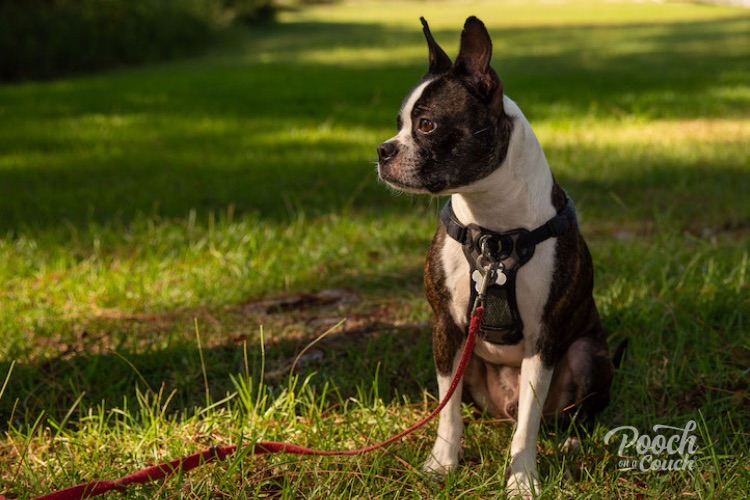
Carter Bloodied My Lip
The first day I brought Carter home to foster, I sat down on the kitchen floor with him. Excited, Carter lunged at my face for some kisses and love-nips. He hit me pretty hard with a “love-nip” and busted my lip. He and I began working on this leftover puppy behavior and he’s much better, although it still emerges from time to time.
Because of this behavior, Carter will have a little harder time being placed as I’ve put age restrictions on children in the home.
(update: Carter is now adopted to a wonderful home without children)
It is imperative humans teach puppies that play biting is not for grownups and body parts are off-limits. Training away puppy biting lays the foundation for further impulse control training and improves social boundaries.
Adult dogs can be trained to not play-bite with humans.
[Not all puppy or dog biting behavior is simply untrained behavior. If you are struggling with a puppy or dog that is biting, please see your veterinarian or consult with an Animal Behaviorist.]
Learn How To Break Up A Dog Fight The Right Way
I’ve been bitten severely only once, with a nice puncture wound in the fleshy space between my thumb and forefinger, along with bruising to the knucklebones of the same hand. That bite landed me in the ER and I could not close my hand for 6 weeks.
I was bitten trying to break up a mild dog fight, and the offending dog redirected his “I’m irritated” behavior onto me in impulse. He let go of me the minute he realized his jaws were around my hand, but not before he’d injured me.
Here is an article on ways to break up a dog fight, written for staff working in a shelter setting. There are plenty of other sources that talk about using the wheelbarrow method, and I am not a total fan of this method, as I think using this method can put you at risk for a severe redirected bite from a dog that is way over threshold. However, if you’ve used this method with success, I won’t argue with you.
And for a little food for thought: Looking back, I started every dog fight that’s occurred in my house. All fights in my home have been caused by unmanaged high arousal and resource guarding. In other words, every fight in my home could have been prevented. I have altered my behavior, and kerfuffles in my home have been greatly reduced.
I don’t want to be known as the lady that starts dog fights!
Ounce of Prevention, Pound of Cure
None of my dogs have ever bitten a child. In my younger adulthood, my high-arousal dogs have bitten adults who were engaged in behaviors my dogs found unpredictable. Once, a friend was dancing like Phoebe from the sitcom ‘Friends.’ My dog, Derby, did not like this behavior one bit and barked at her. That was my cue, along with a few other observations) and I IGNORED THEM. Derby bit my friend on the calf, leaving a painful bruise. That incident could have been avoided by puppy training, and by me not ignoring my dog. I should have asked my friend to stop until I could put Derby away. I had the opportunity to prevent this dog bite, and I didn’t.
In another incident, a neighbor ignored me when I told him to stop roughhousing with my dog, she was telling him she didn’t like it. He ignored me, repeatedly, and got a nice puncture wound on his hand. While he deserved what he got, my dog didn’t deserve to be set up – she deserved my help, and I failed her.
Prevent dog bites! Know your dog, protect your dog, and providing training to advance your dog’s coping skills.
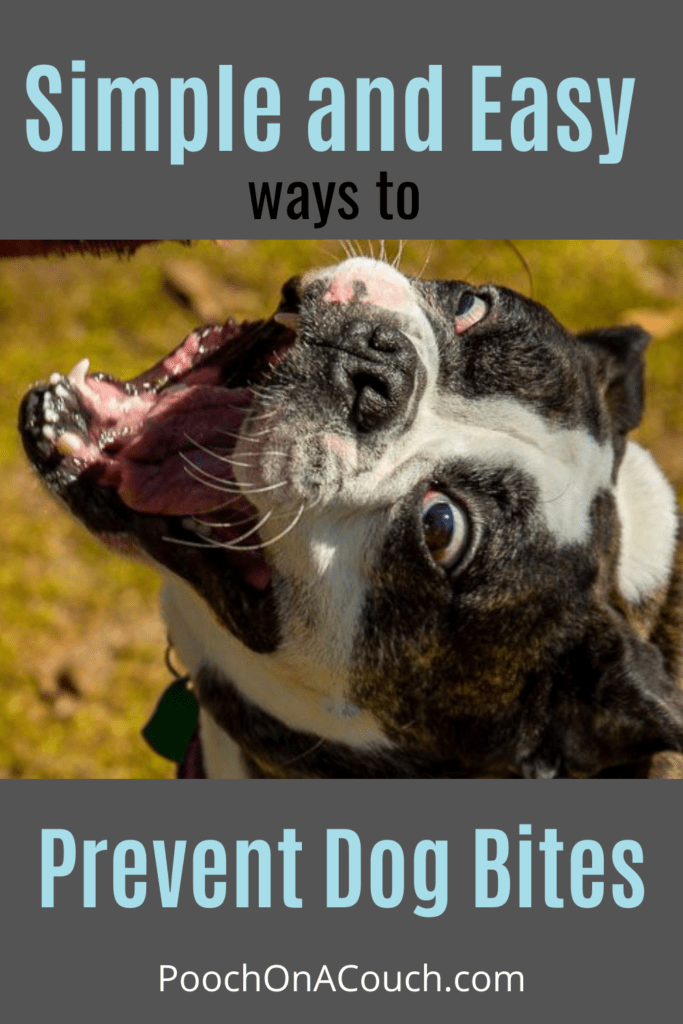
Extra Credit Reading
Dog Bite Prevention – AVMA article
Dog Bite Prevention – Victoria Stilwell
Why Dogs Bite Children – Sophia Yin
Popular Posts
- HOW TO CHOOSE A DOG RESCUE AGENCY
- ULTIMATE GUIDE TO FOSTERING: 10 SKILLS YOU NEED
- VOLUNTEER IF YOU CANNOT FOSTER

